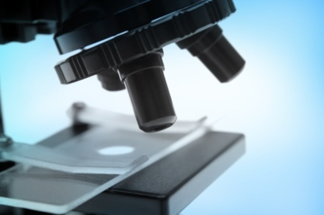Newer Molecular Methods Bring New Insights into Human- And BuildingHealth Risk Assessments from Water-Damaged Buildings: Defining Exposure and Reactivity, the Two Sides of Causation of CIRS-WDB Illness

Scientific disciplines dependent on accurate analytics invariably evolve due to advances in technical aspects of measurement. In disciplines in which adequate measurement is not available for applications to public health policy, the impact of new paradigms in measurement can extend far beyond scientific thought. Both of these concepts apply to the effect of exposure to waterdamaged buildings (WDB) on human health. What causes the putative illness and what government should do to make buildings safe for use, have been impacted by development of molecular methods, particularly Next Generation Sequencing (NGS) and transcriptomics.
The impact of human exposure to Actinobacteria, for example, and identification of immune reactivity specific to these bacteria are now revolutionizing: (i) both detection and quantitation of newly recognized pathogenic organisms; and (ii) the approach to the genomic basis of diagnosis and treatment of disease as manifested by differential gene activation. NGS permits quantitation of exposure and confirmation of risk associated with the threshold of exposure, using defined human health biomarkers that in turn has led to advances in the metabolic and inflammatory issues in WDB illness, called CIRS, both from molecular hypometabolism and activation of TGF beta-1 signaling that defines immunoreactivity to Actinobacteria.
Current recommendations for assessment of exposure/reactivity to fungi and methods of remediation based on fungi alone do not support continued use, now that endotoxins and Actinobacteria are found to be the major causes of human illness from exposure to WDB.
Featured Resources
*NEW FEATURED ARTICLE * Actinobacteria Update: The revolutionary findings on biotoxin illness further explained.
Based on newer, published and confirmed information and testing, we’ve been able to expand the concept of specific causation of "mold illness" or CIRS to include indoor-dwelling Actinobacteria
A Physician’s Guide to Use of Actinobacteria Indices
In the newest report from EnviroBiomics, Actinomycetales, also called Actinobacteria, are now reported with an additional factor called an Actino Index. We look at a Dominance Index (DI) and a Prevalence Index (PI) to assist physicians in making clinical de...
New Research Article!
Treatable metabolic and inflammatory abnormalities in Post COVID Syndrome (PCS) define the transcriptomic basis for persistent symptoms: Lessons from CIRS
Metabolism, molecular hypometabolism and inflammation: Complications of proliferative physiology include metabolic acidosis, pulmonary hypertension, T reg cell deficiency, insulin resistance and neuronal injury
Dr. Shoemaker’s latest academic paper is published. This paper, though technical, reports the metabolic basis of conditions routinely found in CIRS.
COVID-19: What is compromised in immunocompromised? The overactive host response holds the danger
People with chronic illness and “immunocompromise” are warned to limit their exposures, even more than younger, immune uncompromised. We are better prepared to deal with COVID-19 when we know more about the immunometabolism of COVID-19 infection. So,...




